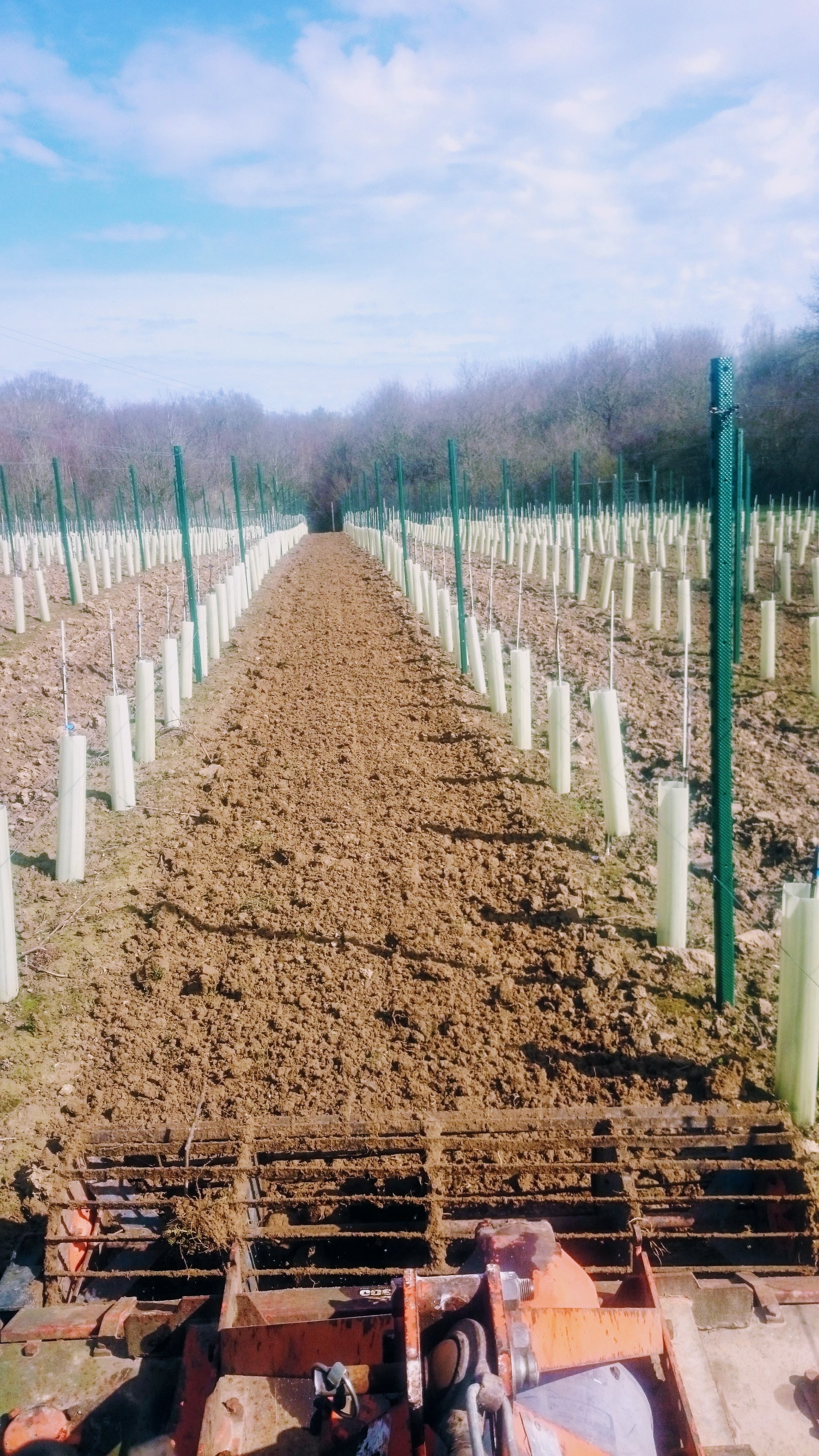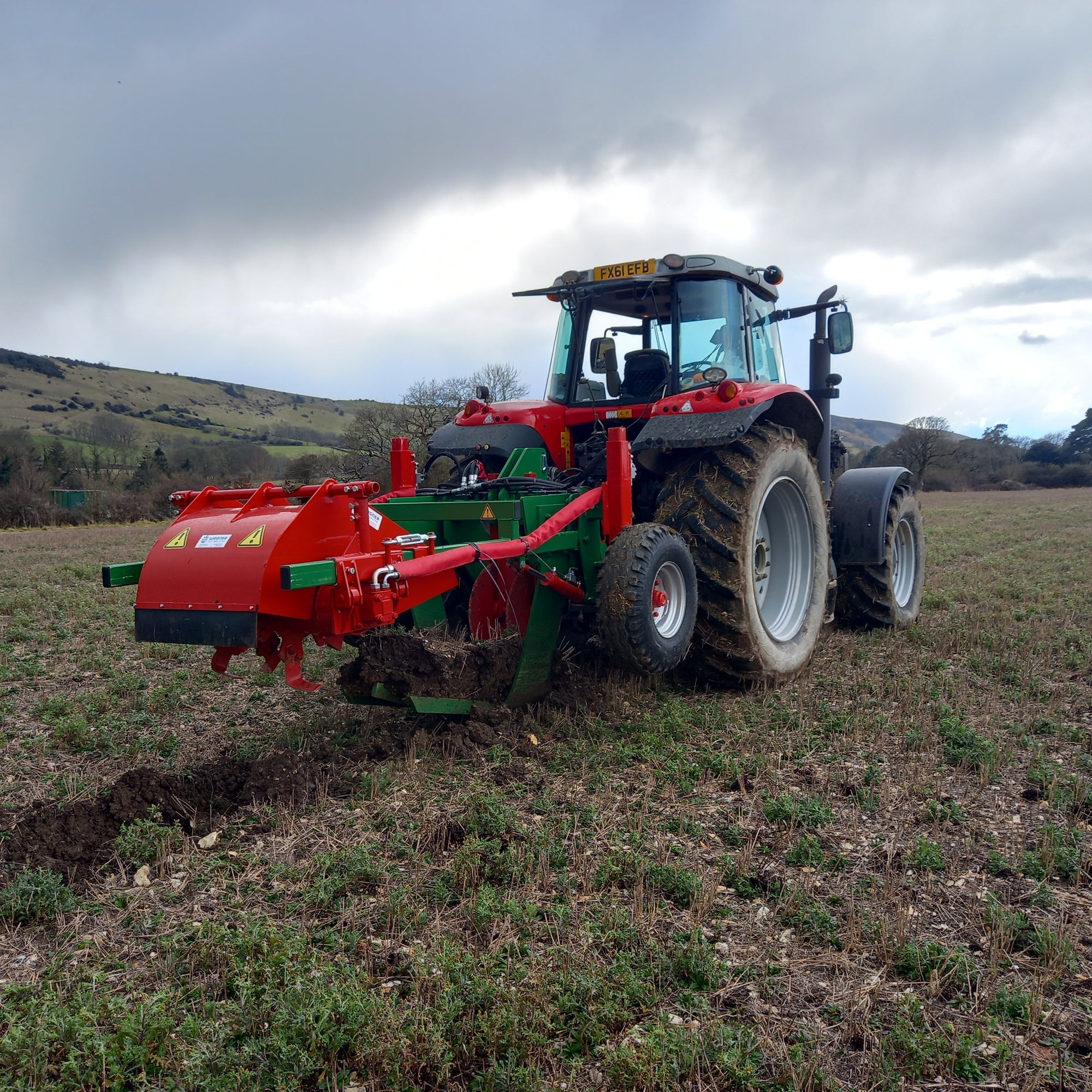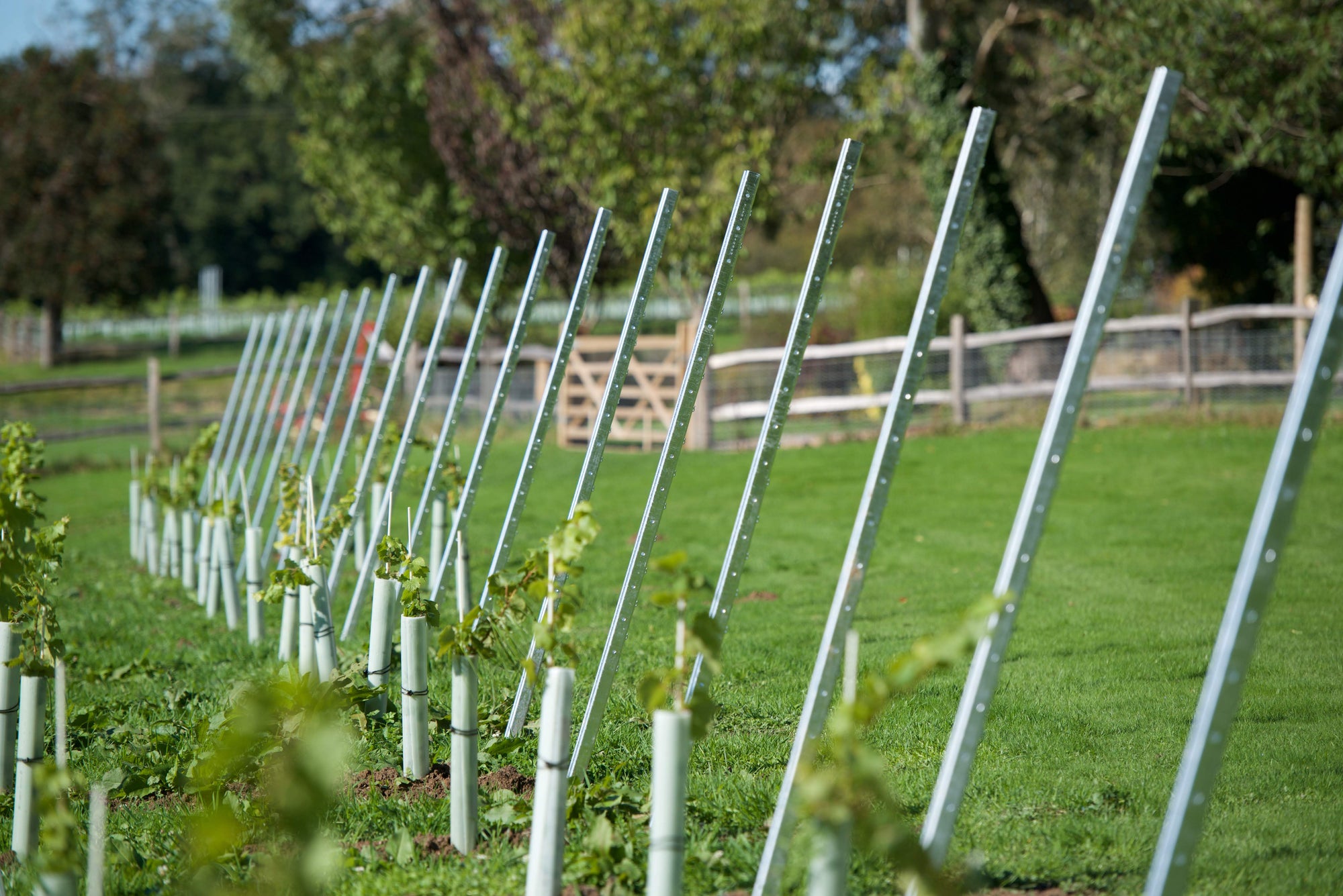

WEED CONTROL IN VINEYARDS IS AN ESSENTIAL PART OF ANY MANAGEMENT PROGRAMME
In the UK, as we receive high levels of rainfall and vineyards are often planted on highly fertile soils, weed pressure can rapidly become a significant concern if not kept in check. In many parts of the world, vineyards have been kept bare with a combination of cultivation and herbicide.
Weed control in vineyards is an essential part of any management program. In the UK, as we receive high levels of rainfall and vineyards are often planted on highly fertile soils, weed pressure can become a significant concern very rapidly if not kept in check. In many parts of the world, vineyards have been kept bare with a combination of cultivation and herbicide. However, vineyards in the UK have almost altogether moved away from this approach due to a large number of drawbacks. Keeping the vineyard’s soil bare increases rapid erosion of the site, poor soil health and low biodiversity. Additionally, there are practical drawbacks as bare soil limits the access of machinery and, to an extent, manual work in the vineyard. Therefore, the majority of vineyard sites in the UK now tend to establish a cover crop in the alleyways (commonly grass), and control the weeds in the undervine area using a variety of approaches.
Herbicide
Traditionally the most common approach to managing the undervine area has been through herbicide applications. Herbicide is generally very affordable, highly effective and easy to apply, which is why it has been the chosen method by many for so long. However, the chemicals involved are contentious with evidence of residues appearing in food chains and long term negative effects to the soil and local environment. There have been a number of high profile legal cases where evidence of harm to operators resulting from long term exposure to these chemicals has been argued. However, the extent of all these concerns is still widely debated and it does appear that when used correctly, safely and sparingly they are a highly effective method with limited drawbacks. What remains though is that public opinion on the use of herbicide has shifted and more and more products are losing their approval licenses – particularly on minor crops such as grapevines. Therefore, it is essential growers be flexible and work towards an integrated weed management program.
Mechanical
There are now a large number of vineyard appropriate tools which can be used to manage weeds in the vineyard. From the common rotary tillers to strimmers and finger weeders to side hoes. The use of rotary tillers, such as a rollhacke, have become extremely popular due to their affordability and simple self-propelled mechanism. They work by tearing and smearing a shallow section of soil to uproot the germinating weeds. They can also incorporate organic matter and/or other applied fertilisers into the soil without disturbing the key soil structure beneath. However, timing is key - a rollhacke struggles with large established weeds and grass, but is also ineffective if used too early. Once weeds become large and established most of the mechanical options become ineffective and the only options that remain are mowers and strimmers. However, these only cut the weeds back rather than uproot them - a short term fix rather than long term solution.
Mulches
Unfortunately wood chips and bark are not recommended, as they can interfere with the nitrogen exchange in the soil and reduce the vines’ ability to grow. Other options are fairly limited, examples in literature are straw and paper mulches, which are fairly effective but practically very difficult to distribute in the vineyard. All that remains is the use of a side dispensing mower which ejects its clippings directly into the undervine area to build a mulch. When used correctly this can be a very effective method at suppressing weed growth and bringing organic matter into the soil. However, to be effective a very large volume of clippings is required which means leaving the cover crop to grow to heights which may negatively impact airflow and humidity in the vineyard creating further problems.
Novel approaches
Recently a number of new and unusual alternative approaches have been developed. These include:
◆ Flaming, which works by scorching weed tissue, damaging cellular structure and disrupting water and nutrient flow which kills the leaves.
◆ Foam, which works in a similar way as flaming, but the heat is transferred to the weed via a hot foam made from natural plant oils.
◆ Electrical, which works by transferring an electric current through the weeds and boils the plant tissue.
◆ High pressure water, which works by firing high-pressure water, breaking the foliage of the weeds.
The above methods, which seem to have a number of advantages, are currently generally not ready for use in a commercial vineyard setting - and some may never be. Flaming and electrical weeding are likely the most obvious candidates for use in a vineyard, but their efficacy is not yet high enough and costs are too large to compete with other existing methods.
To conclude, a vineyard manager must take great care in controlling the weed growth in their vineyard. Too much vegetative matter in the alleyways and undervine area contributes to nutrient and water competition, reduced airflow and higher humidity in the vineyard. While herbicides are still available, their safe and appropriate use is encouraged with the use of well-timed mechanical options and in some instances the use of undervine mulching to complement their effectiveness. In cases where an organic, non-herbicide approach is desired, this is very achievable, but will require more frequent and varied mechanical approaches. However, where more mechanical passes are required, there is the increased risk of compaction in the soils which can limit the grapevine's ability to source water and nutrients. Each of these advantages and drawbacks should be considered when designing a weed management program.



